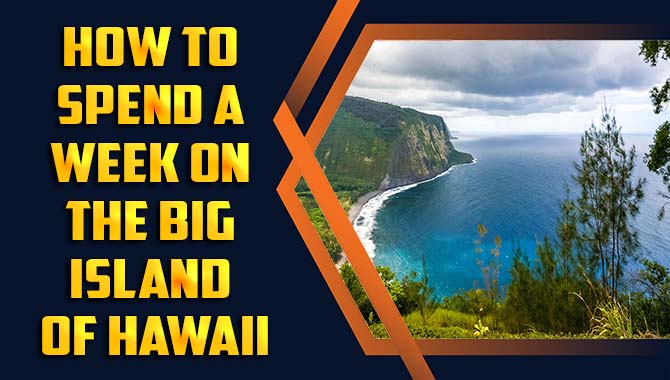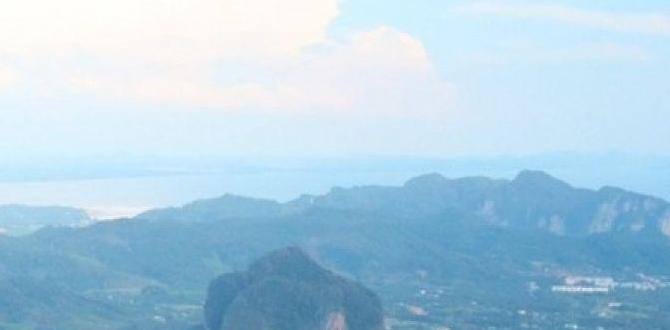Atacama Desert nightlife isn’t about clubs, but breathtaking stargazing. Experience unmatched celestial views, guided by experts, from unique observatories and remote desert spots. This guide unveils how to witness the universe’s grandeur in this unparalleled location, perfect for quiet adventurers.
Dreaming of the Atacama Desert but picturing a silent, dark expanse after sunset? You might be surprised! While the Atacama isn’t famous for pulsing dance floors, its “nightlife” is arguably more spectacular. It’s a world of unparalleled stargazing, where the universe puts on a show unlike anywhere else on Earth.
For those who prefer quiet wonder over loud parties, this is your ultimate guide to experiencing the magic of the Atacama after dark. We’ll help you navigate this celestial adventure with ease, ensuring you don’t miss a single twinkling highlight.
Atacama Desert Nightlife: For the Stargazer in You
When we talk about nightlife in the Atacama Desert, we’re speaking a different language than your typical city break. Forget crowded bars and loud music; here, the main event unfolds far above. The Atacama boasts some of the clearest skies on the planet, making it a prime destination for astronomy and simply marveling at the cosmos. This extreme aridity, high altitude, and lack of light pollution create perfect conditions. Whether you’re a seasoned stargazer or a curious first-timer, the opportunities to connect with the night sky are abundant and awe-inspiring.
Why the Atacama is a Stargazer’s Paradise
Several factors contribute to the Atacama’s reputation as one of the best places on Earth to observe the night sky:
- Extreme Aridity: The Atacama Desert receives very little rainfall, meaning there’s almost no cloud cover to obscure your view.
- High Altitude: Many observatories and stargazing tour areas are situated at high elevations (over 2,400 meters / 8,000 feet), lifting you above much of the atmospheric interference.
- Lack of Light Pollution: The region is sparsely populated, and strict regulations are in place to minimize artificial light, preserving the natural darkness required for optimal viewing.
- Stable Atmosphere: The desert climate often leads to a calm atmosphere, reducing “twinkling” (scintillation) and providing clearer images of celestial objects.
Planning Your Atacama Stargazing Adventure
To make the most of your Atacama desert nightlife experience, a little planning goes a long way. Here’s what you need to consider:
Choosing Your Base: San Pedro de Atacama
Most visitors to the Atacama Desert stay in the charming oasis town of San Pedro de Atacama. While it’s a small town, it serves as the central hub for all desert activities, including stargazing tours. It offers a range of accommodations, from budget hostels to comfortable hotels, and is where you’ll find tour operators and essential services.
Best Time to Visit for Stargazing
While the Atacama offers incredible stargazing year-round, some periods are better than others:
- Moon Phase: Aim for a new moon phase. The darker the sky, the more stars and fainter objects you’ll see. Check a lunar calendar before booking your trip.
- Clear Skies: The Atacama is generally dry, but the austral winter (May to September) can sometimes bring slightly more cloud cover than the driest months. However, even during these times, clear nights are frequent.
What to Pack for Desert Nights
Nights in the desert get surprisingly cold, even after hot days. Layering is key!
- Warm Clothing: Think fleece jackets, thermal layers, hats, gloves, and warm socks. Temperatures can drop to near freezing or below.
- Comfortable Shoes: You might be walking on uneven terrain.
- Sun Protection: During the day, the sun is intense. Sunscreen, a hat, and sunglasses are essential.
- Reusable Water Bottle: Staying hydrated is crucial in the dry climate.
- Camera: Don’t forget your camera; many tours offer chances to capture stunning night sky photos. A tripod is highly recommended for astrophotography.
Experiencing Atacama Nightlife: Tours and Activities
The most common and highly recommended way to experience the Atacama’s nightlife is through guided stargazing tours. These tours are designed for all levels of interest and offer a fantastic introduction to the cosmos.
Choosing a Stargazing Tour
San Pedro de Atacama offers numerous stargazing tour operators. Here’s what to look for:
- Expert Guides: Look for tours with knowledgeable guides who can explain constellations, planets, and astronomical phenomena in an engaging way.
- Equipment: Reputable tours use professional telescopes suitable for viewing deep-sky objects, planets, and the moon. Some even offer astrophotography sessions.
- Location: Tours typically take you away from the lights of San Pedro to darker, more remote locations.
- Inclusions: Some tours might include a welcome drink or snack.
Popular Stargazing Tour Options:
Most tours involve a transfer to an observation point, an educational talk, and time with telescopes.
| Tour Type | What to Expect | Best For |
|---|---|---|
| Standard Stargazing Tour | Transportation to a dark site, presentation on astronomy, observation through telescopes (planets, nebulae, galaxies, star clusters). | Beginners, general interest visitors. |
| Astrophotography Tour | Focuses on teaching you how to photograph the night sky using your own camera and tripod. Often includes telescope viewing as well. | Photography enthusiasts. |
| Scientific/Observatory Visit | Some tours offer visits to research observatories (which may have limitations on guest access and photography). These provide a more in-depth scientific perspective. | Those interested in professional astronomy. |
Self-Guided Stargazing
If you prefer a more independent experience, or your budget is tighter, you can also venture out on your own. However, this requires more preparation:
- Rent a Car: Renting a vehicle gives you the freedom to drive to darker spots outside of town.
- Choose a Location: Drive a few kilometers out of San Pedro on unpaved roads (ensure your rental agreement allows this and you have a suitable vehicle, like a 4×4 for some areas). A good strategy is to head towards areas like the Valle de la Luna (Moon Valley) or Pukará de Quitor, but venture further away from the immediate tourist spots.
- Use Stargazing Apps: Download astronomy apps like SkyView, Star Walk, or Stellarium on your phone. These apps use your phone’s compass and GPS to identify constellations, planets, and stars in real-time.
- Bring a Red-Light Flashlight: Red light preserves your night vision, which is crucial for stargazing. White light will temporarily blind you to faint celestial objects.
Note: While self-guided stargazing is possible, the educational component and professional equipment offered by tours significantly enhance the experience, especially for beginners.
Visiting Observatories
The Atacama is home to some of the most important astronomical observatories in the world, like ALMA (Atacama Large Millimeter/submillimeter Array) and Paranal (VLT – Very Large Telescope). While these are primarily research facilities, some offer limited visitor programs or tours. Check their official websites for the most up-to-date information on accessibility, as access can be restricted and booking well in advance is usually required.
For instance, the European Southern Observatory (ESO) at the Paranal site occasionally offers guided tours, which require prior booking and have specific criteria. These represent a unique opportunity to see the cutting edge of astronomical research.
Beyond the Telescopes: Other Atacama Evening Activities
While stargazing is the star attraction, San Pedro de Atacama offers a few other ways to enjoy your evenings.
Exploring San Pedro de Atacama Town
After a day in the desert, the small town of San Pedro comes alive in a gentle way after sunset. Browse the artisan shops, enjoy a meal, or simply soak in the atmosphere of the main plaza.
- Artisan Market: The market near the plaza is a great place to find local crafts, jewelry, and souvenirs made from local materials.
- Restaurants and Cafes: San Pedro has a good selection of restaurants and cafes serving local and international cuisine. Try some traditional Chilean dishes or enjoy a pisco sour.
- Plaza de Armas: The central plaza is a lovely spot to relax, people-watch, and enjoy less polluted views of the sky if you choose to stay close to town.
Geysers del Tatio (Dawn Experience)
This isn’t strictly “nightlife,” but it’s an essential pre-dawn experience. Tours to the Geysers del Tatio depart very early in the morning, often before sunrise. You’ll witness the spectacular geothermal field at its most active as the cold morning air interacts with the hot geysers. Some tours include breakfast in this unique setting. It’s an unforgettable way to start your day and a stark contrast to your nighttime stargazing adventures.
Lagunas Altiplanicas and Salar de Atacama
Some tours to the high-altitude lagoons (Lagunas Altiplanicas) or the salt flats (Salar de Atacama) may extend into the late afternoon or early evening. While you won’t be stargazing at these specific locations, sunset over these stark, beautiful landscapes can be incredibly dramatic and offer a different kind of evening spectacle.
Essential Considerations for Your Desert Nights
To ensure your comfort and safety during your Atacama stargazing adventures, keep the following in mind:
Altitude Sickness
San Pedro de Atacama itself is at about 2,400 meters (7,900 feet), but stargazing tours often go higher. Be aware of the symptoms of altitude sickness:
- Headache
- Nausea
- Dizziness
- Fatigue
To mitigate the risks:
- Stay hydrated (drink plenty of water).
- Avoid alcohol and heavy meals on your first day.
- Take it easy upon arrival.
- Many tour operators provide coca tea or other remedies. Consult your doctor about altitude sickness medication like Diamox if you are prone to it.
For more information on preventing altitude sickness, the Centers for Disease Control and Prevention (CDC) offers excellent advice on travel health.
Safety in Remote Areas
When venturing out, especially for self-guided stargazing, stay aware of your surroundings. Stick to marked paths where possible and inform someone of your plans if you’re going solo. Tour operators are well-versed in safe practices for desert excursions.
What About Adult Diapers or Personal Care?
For travelers who might require them, especially on long desert excursions or flights to get there, maintaining comfort and dignity is paramount. Places like San Pedro are relatively small, and while amenities are available, it’s always wise to be prepared. Bringing your preferred brand of adult diapers or other essential personal care items ensures you can focus on the experience without worry. Many travelers find that having a discreet supply of adult protective underwear or briefs offers peace of mind for extended outings, long travel days, or simply for added security. These are designed for comfort and discretion, allowing you to enjoy the wonders of the Atacama without interruption.
Conclusion
The Atacama Desert offers a unique kind of nightlife, one that trades artificial lights for starlight and bustling crowds for quiet contemplation. It’s an immersion into the grandest spectacle our universe has to offer. By planning ahead, packing wisely, and choosing the right stargazing experience, you’re set for an unforgettable journey.
Whether you opt for a guided tour with expert astronomers or find your own quiet corner under the vast desert sky, the Atacama promises a connection to the cosmos that will stay with you long after you leave. Prepare to be humbled, amazed, and utterly captivated by the celestial wonders that unfold each night.
Frequently Asked Questions
Q1: Is Atacama Desert nightlife only about stargazing?
A1: Yes, for the most part. The unique environment of the Atacama makes it unsuitable for typical nightlife. Instead, the “nightlife” consists of incredibly clear stargazing, often with expert-guided tours and telescope viewing.
Q2: Do I need to book stargazing tours in advance?
A2: It is highly recommended, especially during peak travel seasons. Popular tours can sell out, so booking a few days or even weeks in advance ensures you get your preferred tour and date.
Q3: What should I wear on a stargazing tour?
A3: Layers are essential. Bring warm clothing such as a fleece jacket, thermal wear, a hat, and gloves, as desert nights can be very cold, often dropping below freezing, even after hot days.
Q4: Can I see the Milky Way in the Atacama?
A4: Absolutely! The Atacama Desert is one of the best places in the world to see the Milky Way with the naked eye due to its extreme darkness. The galactic core is often a spectacular sight.
Q5: What are the best months for stargazing in Atacama?
A5: While stargazing is good year-round, the months with the new moon are ideal. The driest months are generally from March to December, offering the highest chance of clear skies.
Q6: Is it safe to go stargazing on my own?
A6: While possible, it’s recommended for beginners to take a guided tour. Tours ensure safety, provide expert knowledge, access to telescopes, and take you to optimal viewing locations away from light pollution.
Q7: What are some other activities to do in the evenings in San Pedro de Atacama?
A7: Evenings can be spent exploring the town’s artisan market, enjoying local cuisine at restaurants, or simply relaxing. Some tours offer sunset excursions to nearby viewpoints before returning for stargazing.



